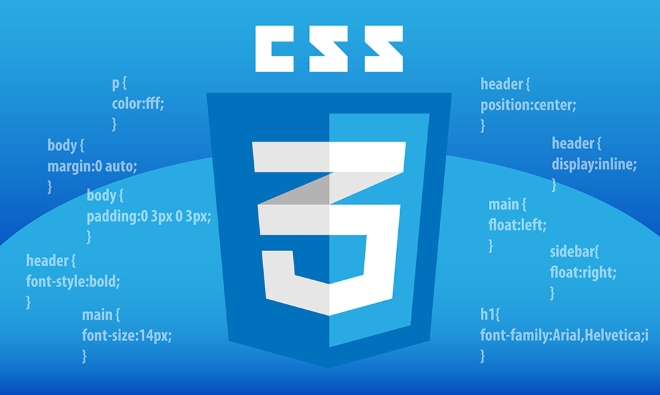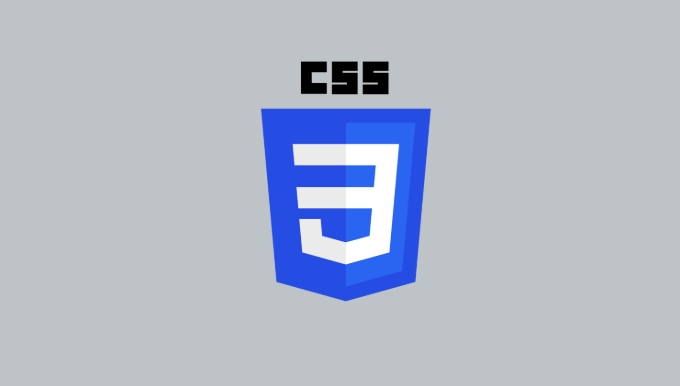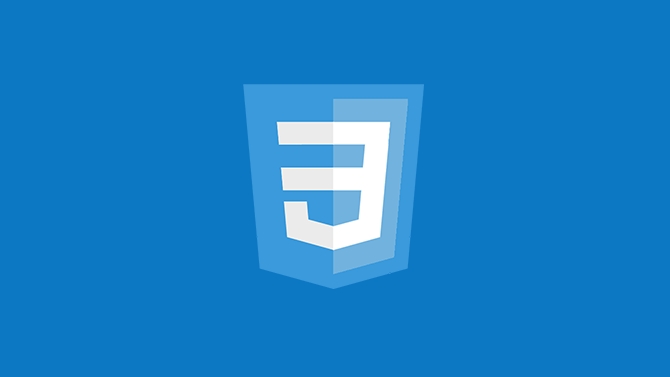To create sticky headers and footers with CSS, use position: sticky for headers with top value and z-index, ensuring parent containers don’t restrict it. 1. For sticky headers: set position: sticky, top: 0, z-index, and background color. 2. For sticky footers, better use position: fixed with bottom: 0, left: 0, width: 100%, and add padding to main content to prevent overlap. Position: sticky keeps elements within scrolling context while fixed positions them relative to the viewport. Test on all screen sizes, avoid large or distracting elements, and ensure accessibility.

A sticky header or footer is a common UI element that stays visible as users scroll. It’s useful for navigation, calls to action, or quick access tools. The good news? You don’t need JavaScript for this—just a bit of CSS.

How to make a sticky header with CSS
To create a sticky header, the key is using position: sticky along with a top value. Here's how:

-
Start by setting the position to
sticky:.header { position: sticky; top: 0; } Make sure it appears above other content by adding a
z-index. Otherwise, it might get covered by other elements:
z-index: 1000;
Don’t forget to give it a background color so content underneath doesn't show through when scrolling.
One thing to watch out for: position: sticky only works if the element has a defined top, bottom, left, or right value. Also, its parent container shouldn’t have overflow: hidden or transform applied—it can break the sticky behavior.
Making a sticky footer the right way
Sticky footers are a little trickier than headers because you usually want them to stick at the bottom of the viewport, not just the page content.
Here’s one reliable method using position: fixed:
- Apply this style to your footer:
.footer { position: fixed; bottom: 0; left: 0; width: 100%; }
This keeps the footer in place even when scrolling. But be careful—if your page content is short and doesn’t fill the screen, the footer might overlap other elements. To avoid that:
- Add padding to the bottom of your main content area equal to the height of the footer:
main { padding-bottom: 60px; /* assuming your footer is around 60px tall */ }
This ensures the main content isn’t hidden behind the footer.
When to use sticky vs fixed positioning
It’s easy to confuse position: sticky and position: fixed.
- Use sticky when you want an element to stay within its scrolling context (like inside a section or sidebar). It scrolls with the page until it reaches a certain point.
- Use fixed when you want the element to always stay in the same spot on the screen, regardless of scrolling.
For example, a sticky nav bar inside a long sidebar will stop scrolling once it hits the top of the sidebar. A fixed footer will always sit at the bottom of the screen, no matter where you are on the page.
Also, keep accessibility in mind: sticky or fixed footers shouldn’t block too much screen space or interfere with reading flow.
Final tips for sticky elements
- Always test on different screen sizes—especially mobile. Sticky headers might look fine on desktop but cause layout issues on smaller screens.
- Avoid making sticky elements too large or flashy. They should help the user, not distract.
- If you're building a single-page app or using frameworks like React or Vue, remember to apply these styles directly in your component stylesheets or global CSS.
And that’s basically it. With just a few lines of CSS, you can add sticky headers or footers that improve usability without complicating your code.
? ??? ?? ??? ?? ?? ?? ?? ??? CSS ????? ?? ?????. ??? ??? PHP ??? ????? ?? ?? ??? ?????!

? AI ??

Undress AI Tool
??? ???? ??

Undresser.AI Undress
???? ?? ??? ??? ?? AI ?? ?

AI Clothes Remover
???? ?? ???? ??? AI ?????.

Clothoff.io
AI ? ???

Video Face Swap
??? ??? AI ?? ?? ??? ???? ?? ???? ??? ?? ????!

?? ??

??? ??

???++7.3.1
???? ?? ?? ?? ???

SublimeText3 ??? ??
??? ??, ???? ?? ????.

???? 13.0.1 ???
??? PHP ?? ?? ??

???? CS6
??? ? ?? ??

SublimeText3 Mac ??
? ??? ?? ?? ?????(SublimeText3)
 autopRefixer ? ???? ??? ??????
Jul 02, 2025 am 01:15 AM
autopRefixer ? ???? ??? ??????
Jul 02, 2025 am 01:15 AM
AutoPrefixer? ?? ???? ??? ???? ?? ?? ???? CSS ??? ???? ???? ?????. 1. ????? ???? ???? ???? ??? ?????. 2. PostCSS ???? ??, CSS? ?? ???? ???? ?? ???? ??? ???? ??? ?? ??? ?????. 3. ?? ???? ???? ??, ??????? ?? ? ?? ???????? ????? ?? ?????. 4. ???? ???? ???? ???? ?? ?? ????, ???? ?? ??? ?? ???? ???? ????? ?? ???? ?? ????.
 ?? ??? ?? ?? ?? ?? ??? CSS ????
Jul 02, 2025 am 01:04 AM
?? ??? ?? ?? ?? ?? ??? CSS ????
Jul 02, 2025 am 01:04 AM
ToTeCreatesTickyHeaders andfooterswithcss, ?? ?? : stickyforheaderswithTopvalueAndz-index
 Conic-Gradient () ??? ??????
Jul 01, 2025 am 01:16 AM
Conic-Gradient () ??? ??????
Jul 01, 2025 am 01:16 AM
theconic-gradient () functionincsscreatescurcular gradientsthattroTecolorstopsaroundacentral point
 ?? ??? ? ????? ????? CSS ????
Jul 07, 2025 am 12:07 AM
?? ??? ? ????? ????? CSS ????
Jul 07, 2025 am 12:07 AM
CSS?? ????? ??? ? ?? ??? ????. 1. HTML ? CSS? ?? ??? ?????? ???? ?? ???? ?? ???? ??????. 2. ?? ??? ??? ?? ???? ???? ?? ?? ??? ?? ?? ??? ??????. 3. ??? ????? ???? JavaScript? ?? ???? ?????? ??? ?????. ? ?? ??? ??? ??? ????? ?? ??, ??, ??? ? ?? ???? ?? ?? ?? ??? ???? ?????.
 ??? ?? ???? ??? ? CSS ????
Jul 02, 2025 am 12:52 AM
??? ?? ???? ??? ? CSS ????
Jul 02, 2025 am 12:52 AM
Mobile-FirstcsSdesignRequiresTtingTheviewPortMetatag, RelativeUnits, StylingFromsMallScreensup, ??? ???? andtouchtargets.first, addtocontrolscaling.second, ??%, em, orreminsteadofpixelsforflexelayouts.third
 ????? ?? ? ??? ????? ??? ??? ??????
Jul 02, 2025 am 01:19 AM
????? ?? ? ??? ????? ??? ??? ??????
Jul 02, 2025 am 01:19 AM
?? ?? ? ??? ????? ????? ?? ??? CSSGrid? ?? (Auto-Fit, Minmax ()) ??? ???? ????. 1. ???-???-?? ?? : ?? (?? ??, minmax (200px, 1fr)) ????? ?? ?? ???? ???? ? ?? ?? ? ?? ??? ????????. 2. ??? ???? ??? ??? ??????. 3. ????? ?? ?? ?? ??? ??????? 100%, ?? ?? : ?? ?? ??? ??? ???? ??? ?????? Border-Box? ???????. 4. ????? ?? ?? ??? ???? ????? ?? ? ??? ??? ??? ?????.
 ??? ??? ?? ???? ??? ???? ???? ??? ??????
Jul 02, 2025 am 12:53 AM
??? ??? ?? ???? ??? ???? ???? ??? ??????
Jul 02, 2025 am 12:53 AM
???? ?? ??? ????? ???? ???? ?? ???? ?? ? ? ????. 1. ?? : 0auto ?? ?? ???? ???? ?? ????? ??? ?? ??? ????? ????? ???????. 2. Flexbox? ???? ?? ?????? ??? ? ?? ?? ??? ???? ??? : 100VH? ???? ?? ? ?? ???? ???? ?? ?? ????? ????? ?????. 3. CSSGRID? ?? ?? ??? ???? ?? ????? ??? ???? ???? ?? ????? ?????? ??? ?? ????? ??? ???? ???????. ? ???? ?? ??? ???? ? ?? ??? ???? ?? ??? ?? ??? ???? ??????.
 @supports? ???? CSS? ?? ?? ? ??????
Jul 02, 2025 am 01:14 AM
@supports? ???? CSS? ?? ?? ? ??????
Jul 02, 2025 am 01:14 AM
feacturedetectionincssusing@supportschecksifabrowsersupportseaspecificfeaturebeforplyplyplatedstyles.1.itusesconditionalcssblocksbasedonproperty-valuepair, sublics@supports (display : grid)







